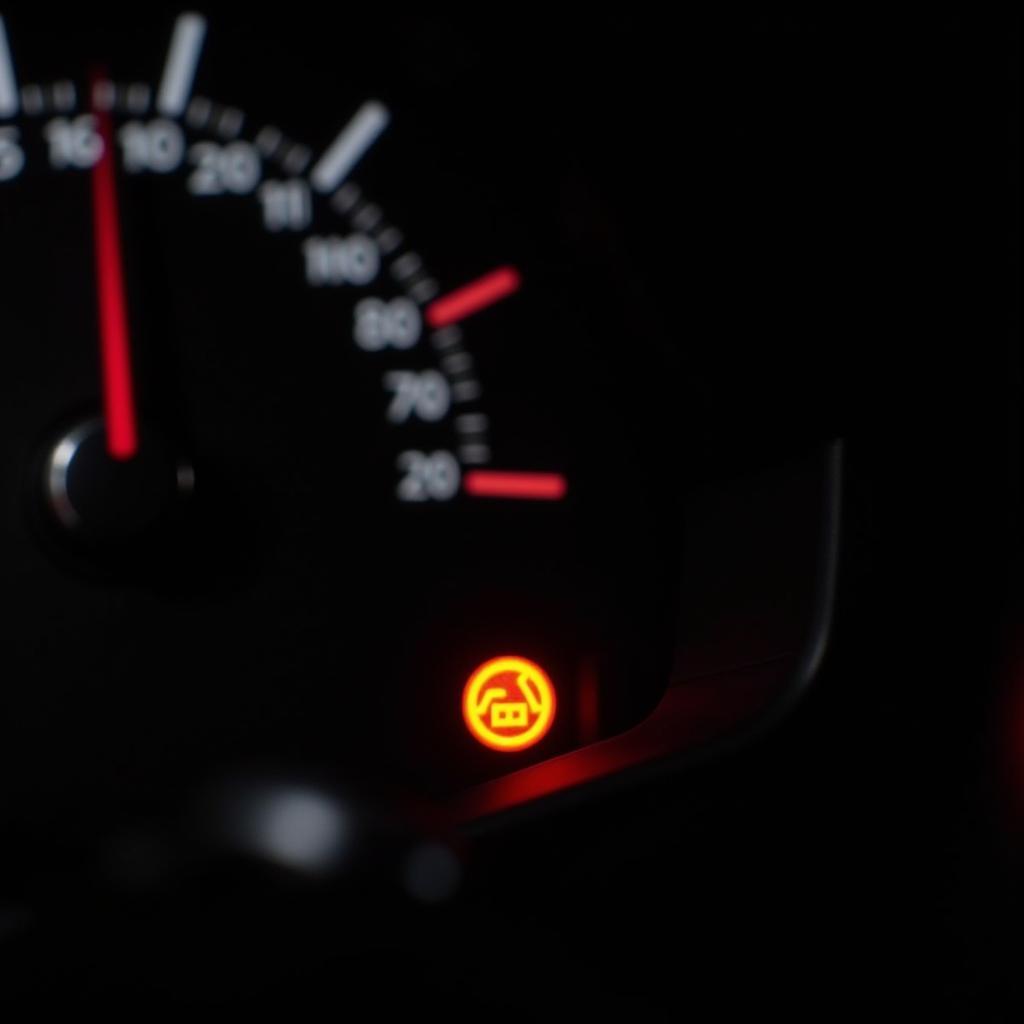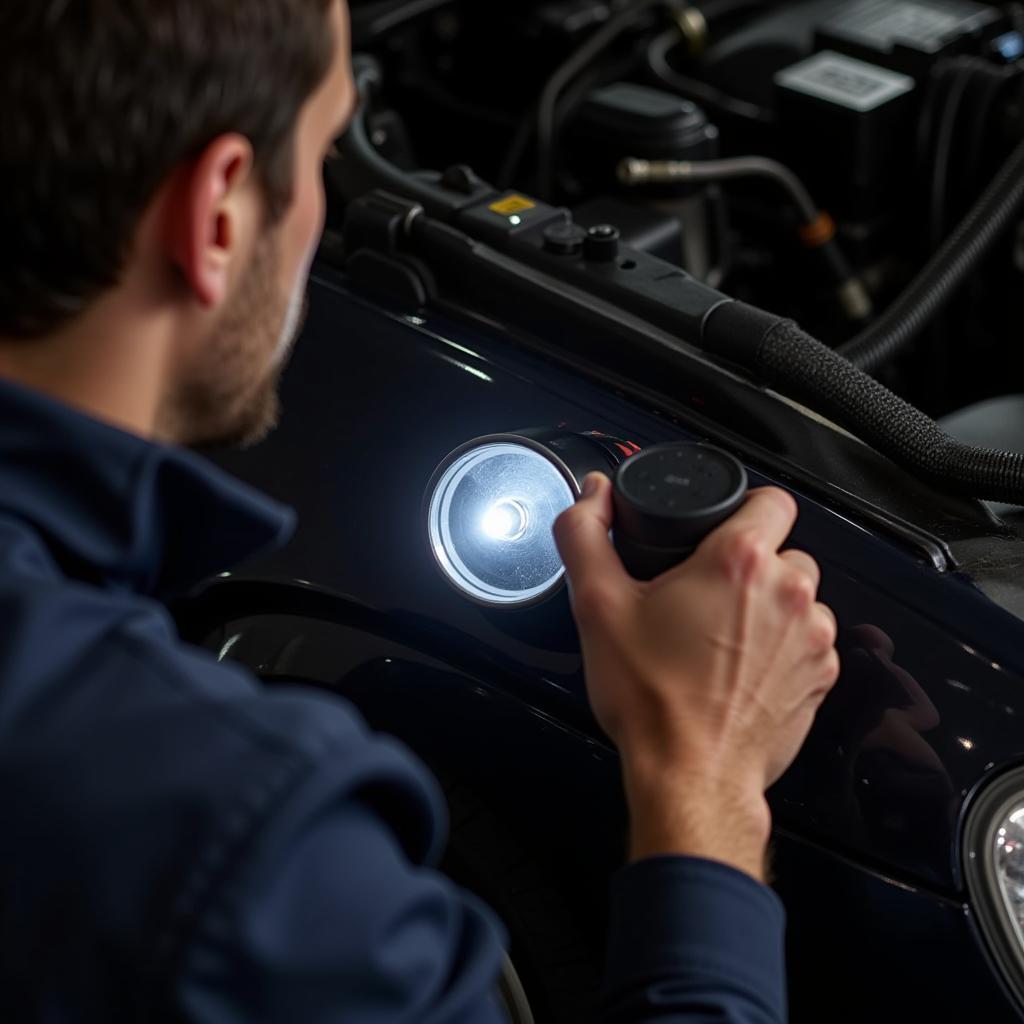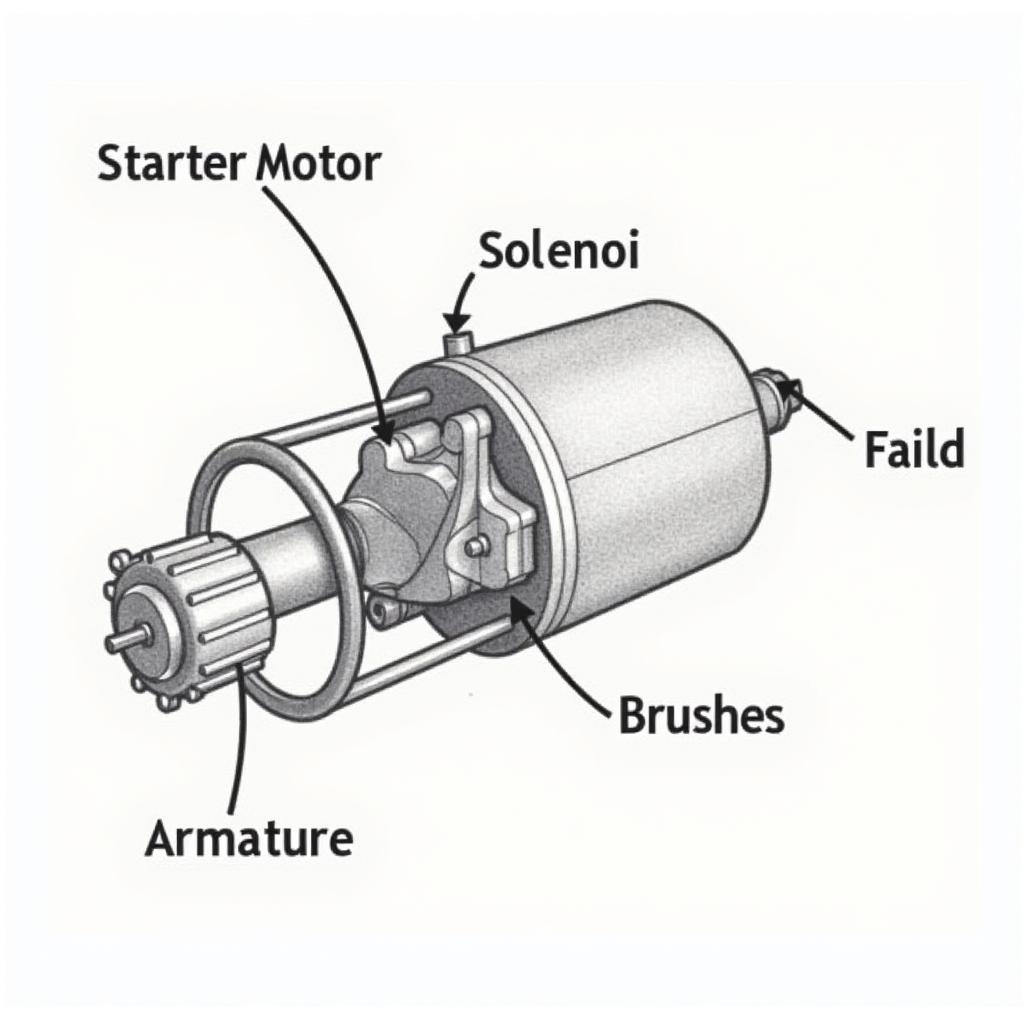A dim brake warning light on your dashboard can be a perplexing issue. While a brightly lit brake light usually signals a serious problem, a dim one can be even more confusing. This article will delve into the potential causes of a dim brake warning light and guide you through troubleshooting and solutions, including remote software diagnostics, programming, and installation. We’ll cover everything from simple checks to more complex electrical issues. Learn how to diagnose and fix this problem effectively.
As a specialist in automotive electrical engineering focusing on remote diagnostics, programming, and software installation, I often encounter the issue of a dim brake warning light. It’s a common concern that can stem from a variety of causes. Let’s explore some of the most frequent culprits and how to address them.
Understanding the Dim Brake Warning Light
A dim brake warning light indicates a potential issue within your vehicle’s braking system, although it may not be as immediately critical as a bright warning light. It’s crucial to investigate the cause promptly to prevent further complications. Ignoring a dim brake warning light can lead to more serious problems down the road. You can find more information about dimly lit brake warning lights on our brake warning light dimly lit page.
Common Causes of a Dim Brake Warning Light
-
Low Brake Fluid: This is often the most common cause. Low brake fluid can trigger the warning light to illuminate dimly, especially when the brake pedal is pressed.
-
Faulty Brake Light Switch: The brake light switch activates the brake lights when the pedal is pressed. A malfunctioning switch can cause a range of issues, including a dim warning light. Check out our article on different types of brake switches: 2 wire vs 1 wire brake warning switch.
-
Grounding Problems: A poor ground connection in the braking system’s electrical circuit can lead to a dim warning light. This can often be traced back to corrosion or a loose wire.
-
Wiring Issues: Damaged or corroded wiring within the brake light circuit can also cause the warning light to dim.
-
Failing Brake Light Bulbs: While a single failing bulb might not cause a dim warning light, multiple failing bulbs can sometimes contribute to the issue.
-
Alternator Issues: In some cases, a failing alternator can cause voltage fluctuations, leading to a dim brake warning light. This is less common but worth considering.
 Dim Brake Light on Car Dashboard
Dim Brake Light on Car Dashboard
Troubleshooting a Dim Brake Warning Light
Here’s a step-by-step guide to help you troubleshoot the problem:
-
Check the Brake Fluid Level: Inspect the brake fluid reservoir and ensure the fluid level is within the recommended range. If it’s low, top it off with the correct type of brake fluid.
-
Inspect the Brake Light Switch: Locate the brake light switch, usually above the brake pedal. Check for any signs of damage or loose connections.
-
Check the Brake Light Bulbs: Inspect all brake light bulbs for signs of burning out or damage. Replace any faulty bulbs.
-
Inspect the Wiring: Visually inspect the wiring connected to the brake light switch and bulbs for any signs of damage, corrosion, or loose connections.
 Mechanic Checking Brake Fluid Reservoir
Mechanic Checking Brake Fluid Reservoir
-
Test the Ground Connection: Use a multimeter to test the ground connection of the brake light circuit. If the ground is faulty, clean or repair the connection.
-
Remote Diagnostics: If the issue persists, consider using remote diagnostics tools. These can pinpoint the problem area more accurately, saving time and effort. For instance, some Fiat 500 owners have reported similar issues; you can find more information on our fiat 500 brake warning light dim page.
Why Remote Software Diagnostics is Beneficial
Remote software diagnostics and programming can be incredibly helpful in diagnosing complex electrical issues, including a dim brake warning light. This technology allows specialists to access your vehicle’s systems remotely and identify the root cause of the problem quickly and efficiently. It can save you trips to the mechanic and potentially identify issues that might be missed during a traditional inspection.
“Remote diagnostics offers a powerful tool for quickly identifying and resolving complex vehicle issues, especially those related to intricate electrical systems,” says automotive electrical engineer, Dr. Sarah Miller. “It allows for a precise and efficient diagnosis, often pinpointing the problem area with greater accuracy than traditional methods.”
When to Seek Professional Help
While some of these troubleshooting steps can be performed at home, it’s essential to seek professional help if you’re uncomfortable working with electrical systems or if the problem persists. A qualified automotive electrician can diagnose and repair the issue safely and effectively, using specialized tools and knowledge. Sometimes, the issue can be related to other warning lights, such as the emergency brake light; you can find more details on our emergency brake light hazard warn page.
“Addressing a dim brake warning light promptly is crucial,” adds Dr. Miller. “Ignoring it could lead to more serious brake system issues, compromising safety and potentially requiring more extensive repairs.” Another common example is a false alarm in a Buick Lucerne 2008, which you can learn about in our buick lucerne 2008 brake light warning false alarm article.
Conclusion
A dim brake warning light, while seemingly minor, can signal underlying issues within your vehicle’s braking system. By following these troubleshooting steps and seeking professional help when necessary, you can ensure your vehicle’s safety and prevent further complications. Addressing a dim brake warning light promptly is crucial for maintaining a safe and reliable vehicle.


